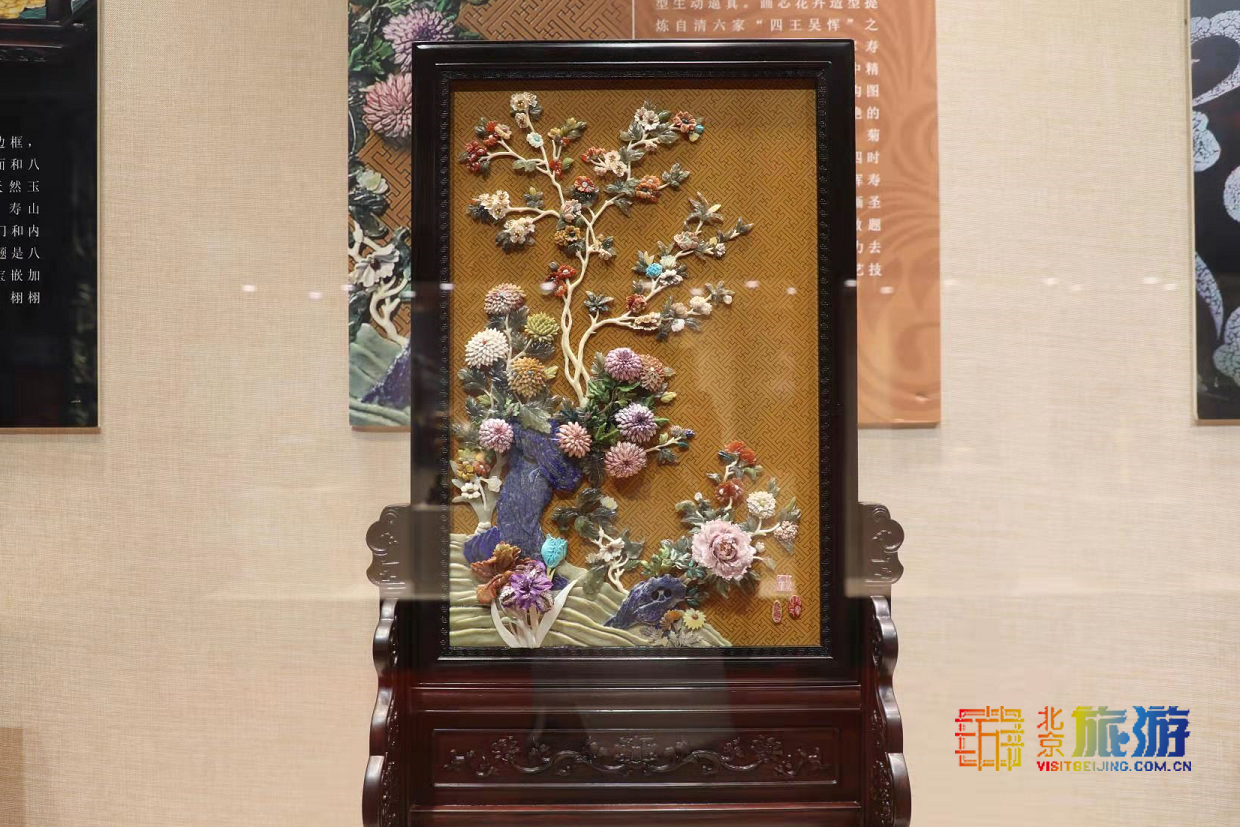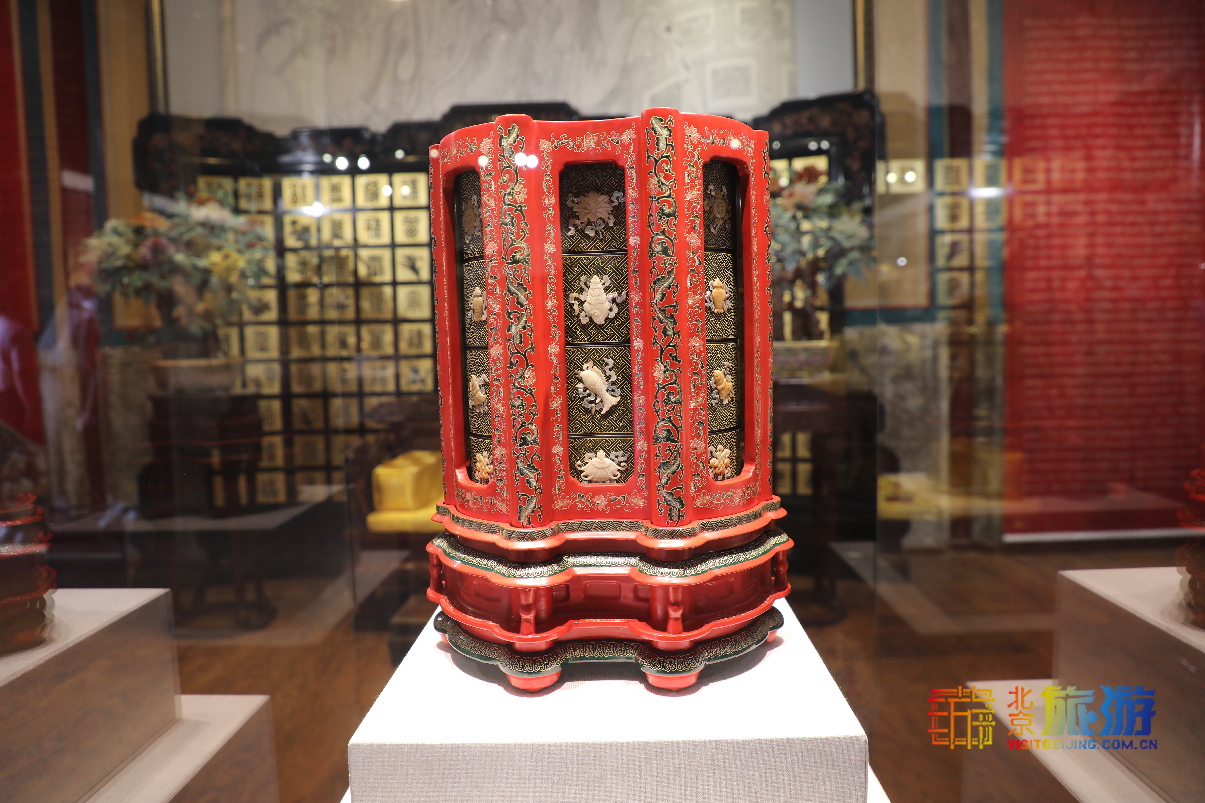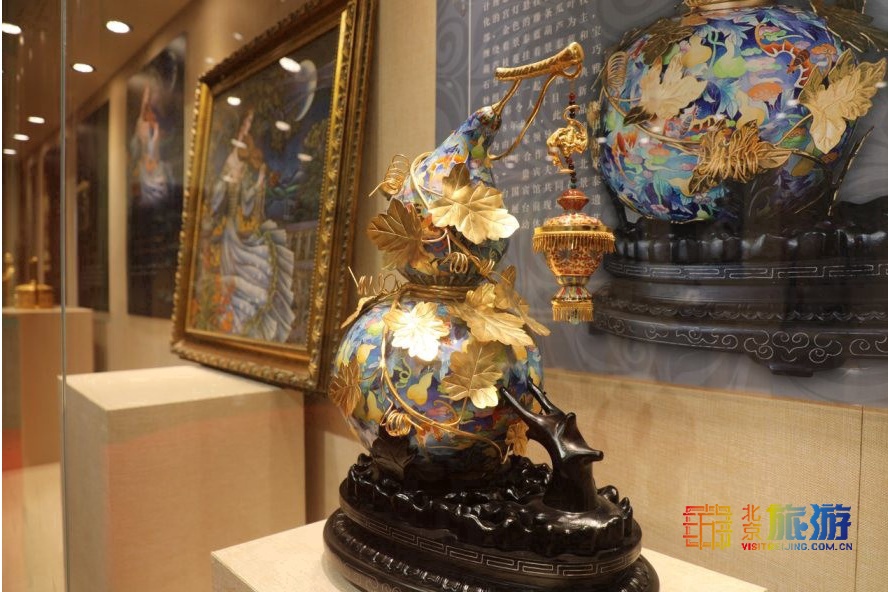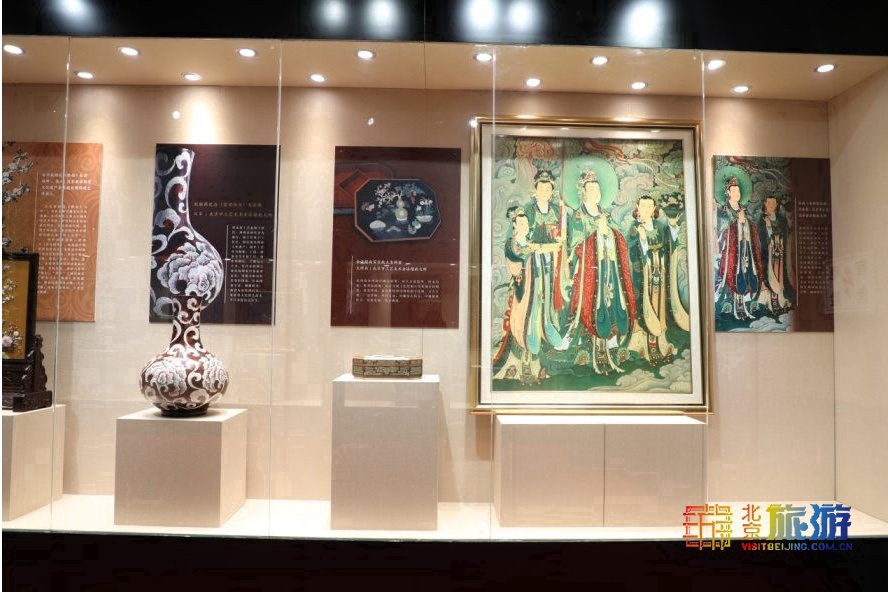On July 12, the Beijing Eight Imperial Palace Handicrafts Museum, located in Cheng'en Temple, a thousand-year-old temple in Beijing's Shijingshan District, was officially opened.

Nearly 10 main exhibition halls display more than 400 pieces of masterpieces, including a gold lacquer imitation of the Forbidden City inlaid with a dragon screen, a filigree-encrusted "Flowers in Blossom" handbag set, a gold lacquer-encrusted auspicious silver eight-ingredient box, a "Longevity" bowl, a carved lacquer longevity peach box and other heritage masterpieces.

The "Eight Imperial Palace Handicrafts" are the eight techniques represented by gold lacquer inlay, filigree inlay, cloisonné, tooth carving, jade carving, lacquer carving, Beijing embroidery and Beijing carpet. They were made by the craftsmen of the Qing Dynasty Palace Manufacturing Bureau, but fell into the hands of the public.

Bo Qun, a representative heir of the national-level intangible cultural heritage of gold lacquer mosaic painting technique and director of the Beijing Eight Imperial Palace Handicrafts Museum, said he would work with other representative heirs of intangible heritage to establish more master workshops of intangible heritage in the transformation of the Model Port Cultural Preservation Area, building on the thousand-year-old Cheng'en Temple, to create a contemporary "Maker's Office" and train a new This will enable visitors not only to see the best products and understand the cultural lineage, but also to feel the crafts and experience the crafts in the museum.

The main building of the Museum, i.e. Cheng'en Temple, is an ancient building of the Ming Dynasty. Cheng'en Temple was built in 1510 and completed in 1513. It is said that there was already a temple here during the period of Emperor Wu De of the Tang Dynasty (618-626), so it is said to be a "thousand-year-old temple". The name "Cheng'en" was given by Zhu Houzhao, emperor of Ming Dynasty, for the meaning of "carrying the grace of heaven". Since the Ming Dynasty, Cheng'en Temple has been known as the "Three Mysteries" because it does not open the temple door, does not receive incense and does not install daochang, so it is also known as "the most mysterious temple in Beijing".

Visitors can buy tickets in advance through the official "Beijing Yanjing Bajie Museum" Wechat account, the ticket price of 20 yuan/pc. The museum opens from 2:00 pm to 4:00 pm on weekdays and from 9:00 am to 4:00 pm on weekends and holidays, and is closed every Monday.




